The prospect of infusing new life into worn-out laminate flooring by applying a layer of glossy epoxy resin might seem highly appealing to the ambitious homeowner. The intersection of these two flooring techniques is something that appeals to many, as they both carry a number of benefits.
At Trusty Tread, we'll consider if you can fashion an epoxy floor across laminate flooring, providing homeowners and interior enthusiasts alike with the comprehensive understanding needed to make well-informed decisions regarding their flooring projects.
We consider how feasible applying epoxy over laminate is, discuss potential advantages and drawbacks, and provide a detailed procedure for those considering undertaking such a venture.
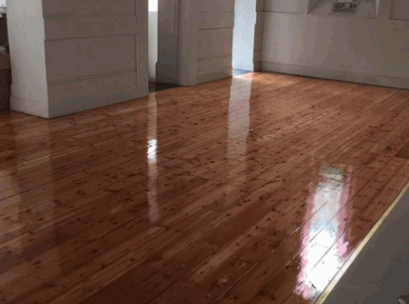
Technically, the answer is yes, you can place epoxy over laminate flooring. However, it is not a conventional practice and poses certain challenges that are crucial to understanding before embarking on this path.
Laminate flooring, a versatile and affordable choice for many homeowners, is designed to mimic the appearance of more expensive materials like hardwood or stone. It is made of several layers including a wear layer, a design layer, an inner core layer, and a backing layer. Its durability and ease of installation make it a popular choice for residential properties.
Epoxy, on the other hand, is a type of resin that when combined with a hardening agent, creates a tough, durable, and highly adhesive coating. Most commonly associated with concrete floors in industrial and commercial settings, epoxy's resistance to stains, water, and wear, as well as its glossy finish, have made it an increasingly popular choice for residential flooring.
In theory, the hard-wearing, glossy nature of epoxy resin could complement the base structure of laminate flooring.
However, there are important factors that need to be considered before you attempt to apply epoxy over laminate:
Given the significant differences between laminate and epoxy, applying epoxy over laminate flooring is generally not recommended. While the prospect of adding a glossy finish to your laminate flooring might be appealing, the inherent properties of these materials can lead to unsatisfactory results.
Laminate flooring is not designed to bond with other materials due to its smooth, non-porous surface, which impedes proper adhesion of the epoxy resin. Additionally, the normal expansion and contraction of laminate panels in response to changes in temperature and humidity could cause a rigid epoxy coating to crack and peel over time.
Furthermore, once applied, removing epoxy can be a challenging and potentially damaging task, leaving you with a permanent alteration that might not meet your expectations.
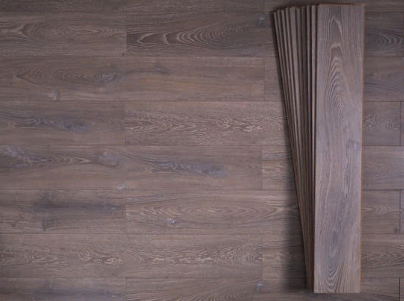
While the epoxy resin is highly adhesive and can bond well with various materials, its ability to adhere effectively to laminate flooring is questionable. Laminate floors present a significant challenge to the adhesion process, due to their smooth nature.
Epoxy resin typically bonds best with porous surfaces like concrete, where it can penetrate the pores and create a strong bond. In the case of laminate, the lack of pores may prevent optimal adhesion, potentially leading to issues such as peeling or chipping over time.
Additionally, the typical expansion and contraction of laminate flooring due to changes in temperature and humidity can further compromise the integrity of the epoxy bond. Therefore, while epoxy resin might physically adhere to the laminate surface to some degree, the bond is unlikely to be durable or long-lasting.
For more information, we recommend checking out our post titled "Are Resin Floors Durable".
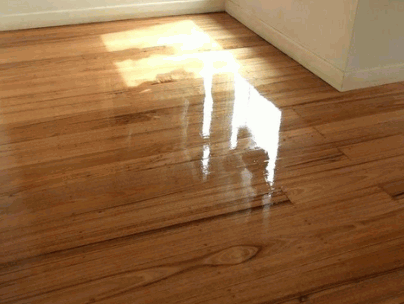
Preparing laminate flooring for an epoxy application involves several crucial steps to enhance the chance of a successful bond between the two materials. Keep in mind that while these steps can improve adhesion, the inherent properties of laminate flooring still pose significant challenges for epoxy adherence.
Here are the general steps for preparing laminate for epoxy resin flooring installation:
Start by thoroughly cleaning the laminate floor. Remove all dust, dirt, grease, or any other contaminants that could interfere with the epoxy's adhesion. You can use a vacuum cleaner or broom for dust and debris, and a mild detergent for any greasy or sticky spots.
Make sure the floor is completely dry before moving on to the next step.
You can also check out our post "How To Clean Resin Floors" for additional insights.
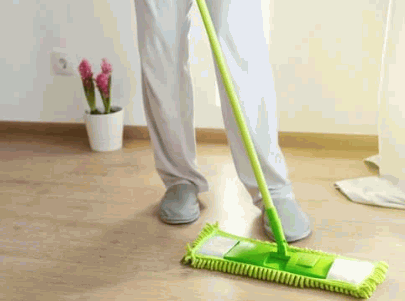
Laminate is a smooth, non-porous surface that poses challenges for epoxy adhesion. To improve this, you can lightly sand the surface to create a more textured, "grippy" surface for the epoxy to adhere to. Use low-grit sandpaper (around 120-150 grit) to scuff the surface.
Remember to maintain the process even across the floor to avoid creating deep scratches or uneven surfaces.
After sanding, there will be fine dust on the surface. This needs to be completely removed, as it can interfere with the epoxy adhesion. Vacuum the floor thoroughly, and then wipe it down with a damp cloth or mop.
Make sure the floor is completely dry before moving on to the epoxy application.
Depending on the type of epoxy you are using; you might need to apply a primer before the epoxy. The primer can help improve the epoxy's adhesion to the laminate. Follow the manufacturer's instructions for the primer application.
To protect walls or baseboards from accidental epoxy contact, tape off the edges of the room with painter's tape.
Once the laminate flooring is adequately prepared for epoxy application, the next steps involve choosing the right epoxy, applying it correctly, and allowing it to cure. Here is a detailed step-by-step guide:
There are many different types of epoxy resins available on the market, each with unique properties. Ensure that you choose an epoxy designed for floor coating and a durable surface. You might want to consider one that is also UV-resistant to prevent yellowing over time.
Epoxy usually comes in two parts: a resin and a hardener. They need to be mixed in the correct ratio according to the manufacturer’s instructions. Improperly mixed epoxy may not harden correctly or may not provide the desired finish.
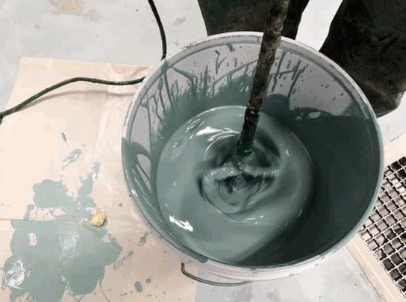
Using a roller or brush, apply the epoxy mixture to the prepared laminate floor. Start in one corner of the room and work your way towards an exit to avoid painting yourself into a corner. Try to maintain a consistent thickness across the entire floor.
Most epoxies are self-levelling, but you'll still want to spread them evenly to prevent pooling or uneven areas.
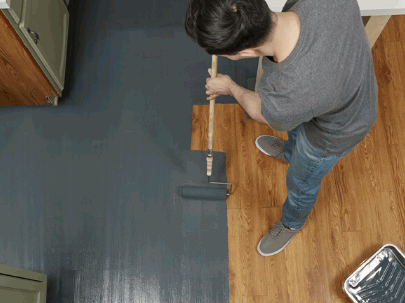
Depending on the type of epoxy you're using; it can take anywhere from 12 to 24 hours for the first coat to dry. Do not try to rush this process, as curing is essential for a strong, durable finish.
For more learnings, you can check out our post "How Long Does Epoxy Resin Floor Take To Dry".
Some epoxy products may require a second coat for best results. If this is the case, apply it in the same manner as the first, but only after the first coat has fully cured.
After the final coat is applied, epoxy flooring needs to be cured. This process can take several days to a week, depending on the specific product used. During this time, the epoxy floor should not be walked on or have anything placed on it. The room should be well-ventilated and kept at a consistent, moderate temperature to facilitate proper curing.
After the recommended curing time has passed, carefully inspect the floor. Look for any bubbles, cracks, or other imperfections in the epoxy coating. Small issues, like scratches or a stone, can often be fixed with a bit of sanding and a touch-up coat of epoxy, but larger problems might require more extensive repairs for homeowners
At Trusty Tread, we understand epoxy flooring and how to get the best surface for all your flooring options, no matter the types of flooring you have. For the most scratch-resistant and attractive finish flooring that is suitable for high-traffic areas, get in touch, and we'll be happy to help.